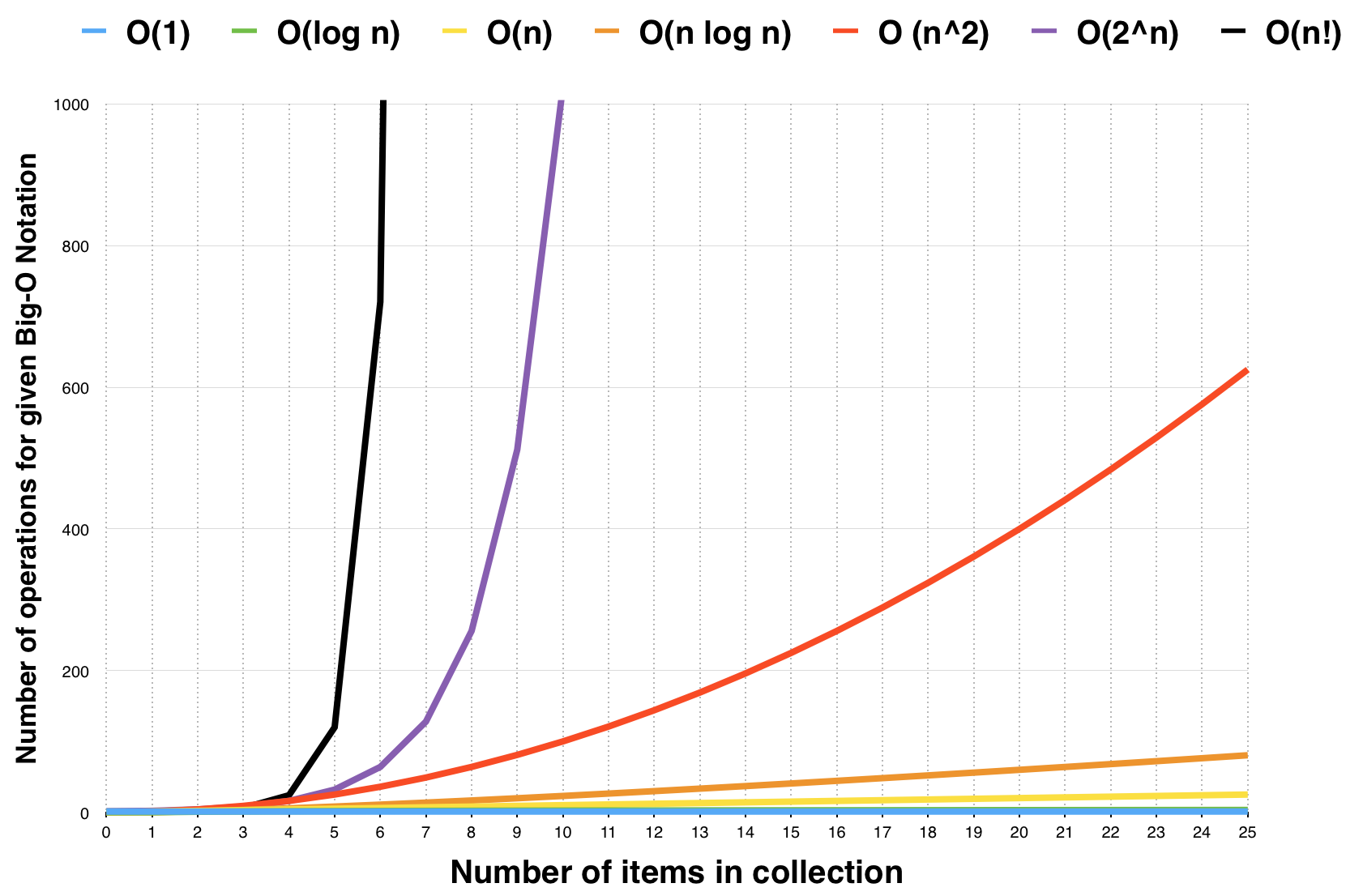原文链接: https://eternityi.github.io/2017/10/09/swift-algorithems-basic-01/
数据结构
- 数组 Array
- 堆栈、队列 Stack/Queue
- 优先队列(堆) Priority Queue(heap)
- 链表(单链表/双向链表)LinkedList(single/double)
- 树、二叉树 Tree/BinaryTree
- 二叉搜索树 Binary Search Tree
- 哈希表 HashTable
- 集合 Disjoint Set
- 前缀树 Trie Tree
- 布隆过滤器 BloomFilter
- LRU Cache
分析常见的数据结构,以及这些数据结构在Swift、Objective-C的使用。
更重要的是实际应用,关于应用每篇文章会从两个方面来进行研究:
- 涉及使用这些基本数据结构解决常见的一些问题
- iOS/macOS SDK中对这些数据结构的实现和优化
算法复杂度
Big O Notation
- O(1): Constant Complexity: 常数复杂度
- O(log n): Logarithmic Complexity: 对数复杂度
- O(n): Linear Complexity: 线性时间复杂度
- O(n^2): N square Complexity 平⽅
- O(n^3): N square Complexity ⽴⽅方
- O(2^n): Exponential Growth 指数
- O(n!): Factorial 阶乘

O(1) 常数复杂度
O(1)时间复杂度的算法执行的时间是固定时间,理论上,执行时间和算法的输入是无关的。
最常见的就是数组中元素的访问操作:
1 | let arr = [1, 1, 3, 5, 8]; |
类似的还有数组的 push() 和 pop() 操作
O(n) 线性复杂度
O(n)时间复杂度的算法,执行时间和算法接收的输入n的大小是相关的。
最常见的就是数组遍历:
1 | for (var i = 0; i < array.length; i++) { |
